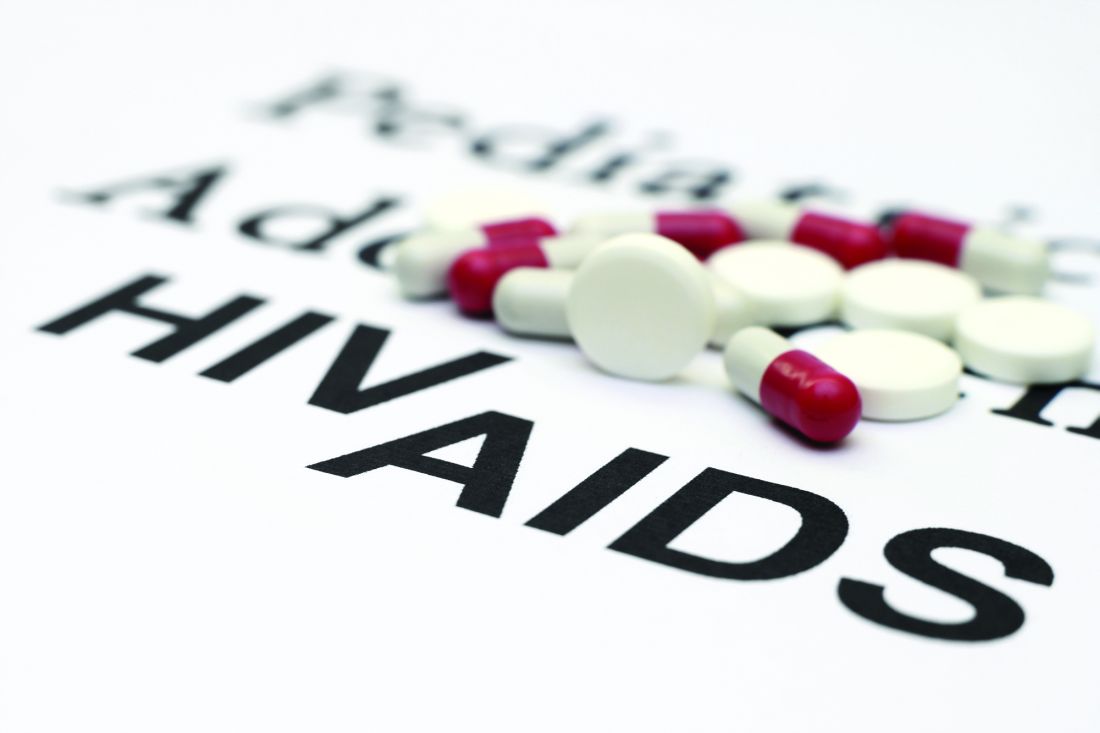User login
A great volume of HIV and AIDS research enters the medical literature every month. It’s difficult to monitor everything, so here’s a quick look at some notable news items and journal articles published over the past few weeks.
Immediate antiretroviral therapy reduces the risk of several severe bacterial infections in HIV-positive people with high CD4 cell count, according to a study in The Lancet HIV. The authors said this is partly explained by ART-induced increases in CD4 cell count, but not by increases in neutrophil count.
Postmenopausal status was not associated with a greater risk of unprotected sex in a population of high-risk HIV-positive Kenyan women, a recent study showed.
HIV-infected individuals in South Africa who reported perceived barriers to medical care at diagnosis were more likely to die within 1 year, according to a study in JAIDS.
A study of HIV care among postpartum women in South Africa found evidence of continued care after patients were lost to follow-up, and also identified local and national clinic mobility among women. Researchers said a national health database linked to a unique identifier is necessary to improve reporting and patient care among highly mobile populations.
HBV/HIV coinfection had no adverse influence on main pregnancy outcomes or on HIV viral load suppression in late pregnancy, according to a recent study, but was associated with a significantly reduced CD4 response in pregnancy.
Switching from atazanavir/ritonavir to unboosted atazanavir appears to be safe and effective in selected virologically suppressed HIV-positive patients receiving regimens containing tenofovir disoproxil fumarate (TDF), and may have favorable effects on bilirubin and renal function.
The level of pain is a negative impact on the quality of life of people with HIV/AIDS, according to a study in AIDS Care.
A recent study found children face significant barriers to accessing HIV services in Central Africa, and the HIV epidemic among surviving children in the region has not been adequately evaluated nor addressed.
Less than a quarter of newly HIV-diagnosed patients in Uganda completed antiretroviral therapy assessment, according to a study in HIV Medicine, considerably lower than in other reports from sub-Saharan Africa.
In a study published in Sexually Transmitted Diseases, researchers concluded that current CDC PrEP guidelines should be expanded to incorporate substance use, partner-level, and other syndemic variables that have been shown to contribute to HIV acquisition.
According to a recent review of the Scientific Registry of Transplant Recipients, there was a slight reduction in anti-HBV core antibody positive donor organs from 2005 to 2014, and stable reporting of HCV positive donor organs and HIV positive recipients.
The transmitted drug resistance prevalence in recent HIV infections among notified newly diagnosed HIV patients in Germany was still high (greater than 10%) in 2013 and 2014 and was within the range of other European countries, according to a report in Eurosurveillance.
Higher levels of HIV+ patient engagement in-care are associated with reduced mortality at all stages of infection, including in those who initiate antiretroviral therapy, according to a British study.
A study in the journal AIDS found that HIV/HCV coinfection is associated with the greater homeostasis model assessment of insulin resistance (HOMA-IR), even after researchers controlled for demographic, lifestyle, and metabolic factors.
The Malawi Adult Meningitis Score (MAMS) provides a novel tool for predicting prognosis and improving interpretation of acute bacterial meningitis clinical trials by risk stratification in resource-poor settings, a recent study showed.
[email protected]
On Twitter @richpizzi
A great volume of HIV and AIDS research enters the medical literature every month. It’s difficult to monitor everything, so here’s a quick look at some notable news items and journal articles published over the past few weeks.
Immediate antiretroviral therapy reduces the risk of several severe bacterial infections in HIV-positive people with high CD4 cell count, according to a study in The Lancet HIV. The authors said this is partly explained by ART-induced increases in CD4 cell count, but not by increases in neutrophil count.
Postmenopausal status was not associated with a greater risk of unprotected sex in a population of high-risk HIV-positive Kenyan women, a recent study showed.
HIV-infected individuals in South Africa who reported perceived barriers to medical care at diagnosis were more likely to die within 1 year, according to a study in JAIDS.
A study of HIV care among postpartum women in South Africa found evidence of continued care after patients were lost to follow-up, and also identified local and national clinic mobility among women. Researchers said a national health database linked to a unique identifier is necessary to improve reporting and patient care among highly mobile populations.
HBV/HIV coinfection had no adverse influence on main pregnancy outcomes or on HIV viral load suppression in late pregnancy, according to a recent study, but was associated with a significantly reduced CD4 response in pregnancy.
Switching from atazanavir/ritonavir to unboosted atazanavir appears to be safe and effective in selected virologically suppressed HIV-positive patients receiving regimens containing tenofovir disoproxil fumarate (TDF), and may have favorable effects on bilirubin and renal function.
The level of pain is a negative impact on the quality of life of people with HIV/AIDS, according to a study in AIDS Care.
A recent study found children face significant barriers to accessing HIV services in Central Africa, and the HIV epidemic among surviving children in the region has not been adequately evaluated nor addressed.
Less than a quarter of newly HIV-diagnosed patients in Uganda completed antiretroviral therapy assessment, according to a study in HIV Medicine, considerably lower than in other reports from sub-Saharan Africa.
In a study published in Sexually Transmitted Diseases, researchers concluded that current CDC PrEP guidelines should be expanded to incorporate substance use, partner-level, and other syndemic variables that have been shown to contribute to HIV acquisition.
According to a recent review of the Scientific Registry of Transplant Recipients, there was a slight reduction in anti-HBV core antibody positive donor organs from 2005 to 2014, and stable reporting of HCV positive donor organs and HIV positive recipients.
The transmitted drug resistance prevalence in recent HIV infections among notified newly diagnosed HIV patients in Germany was still high (greater than 10%) in 2013 and 2014 and was within the range of other European countries, according to a report in Eurosurveillance.
Higher levels of HIV+ patient engagement in-care are associated with reduced mortality at all stages of infection, including in those who initiate antiretroviral therapy, according to a British study.
A study in the journal AIDS found that HIV/HCV coinfection is associated with the greater homeostasis model assessment of insulin resistance (HOMA-IR), even after researchers controlled for demographic, lifestyle, and metabolic factors.
The Malawi Adult Meningitis Score (MAMS) provides a novel tool for predicting prognosis and improving interpretation of acute bacterial meningitis clinical trials by risk stratification in resource-poor settings, a recent study showed.
[email protected]
On Twitter @richpizzi
A great volume of HIV and AIDS research enters the medical literature every month. It’s difficult to monitor everything, so here’s a quick look at some notable news items and journal articles published over the past few weeks.
Immediate antiretroviral therapy reduces the risk of several severe bacterial infections in HIV-positive people with high CD4 cell count, according to a study in The Lancet HIV. The authors said this is partly explained by ART-induced increases in CD4 cell count, but not by increases in neutrophil count.
Postmenopausal status was not associated with a greater risk of unprotected sex in a population of high-risk HIV-positive Kenyan women, a recent study showed.
HIV-infected individuals in South Africa who reported perceived barriers to medical care at diagnosis were more likely to die within 1 year, according to a study in JAIDS.
A study of HIV care among postpartum women in South Africa found evidence of continued care after patients were lost to follow-up, and also identified local and national clinic mobility among women. Researchers said a national health database linked to a unique identifier is necessary to improve reporting and patient care among highly mobile populations.
HBV/HIV coinfection had no adverse influence on main pregnancy outcomes or on HIV viral load suppression in late pregnancy, according to a recent study, but was associated with a significantly reduced CD4 response in pregnancy.
Switching from atazanavir/ritonavir to unboosted atazanavir appears to be safe and effective in selected virologically suppressed HIV-positive patients receiving regimens containing tenofovir disoproxil fumarate (TDF), and may have favorable effects on bilirubin and renal function.
The level of pain is a negative impact on the quality of life of people with HIV/AIDS, according to a study in AIDS Care.
A recent study found children face significant barriers to accessing HIV services in Central Africa, and the HIV epidemic among surviving children in the region has not been adequately evaluated nor addressed.
Less than a quarter of newly HIV-diagnosed patients in Uganda completed antiretroviral therapy assessment, according to a study in HIV Medicine, considerably lower than in other reports from sub-Saharan Africa.
In a study published in Sexually Transmitted Diseases, researchers concluded that current CDC PrEP guidelines should be expanded to incorporate substance use, partner-level, and other syndemic variables that have been shown to contribute to HIV acquisition.
According to a recent review of the Scientific Registry of Transplant Recipients, there was a slight reduction in anti-HBV core antibody positive donor organs from 2005 to 2014, and stable reporting of HCV positive donor organs and HIV positive recipients.
The transmitted drug resistance prevalence in recent HIV infections among notified newly diagnosed HIV patients in Germany was still high (greater than 10%) in 2013 and 2014 and was within the range of other European countries, according to a report in Eurosurveillance.
Higher levels of HIV+ patient engagement in-care are associated with reduced mortality at all stages of infection, including in those who initiate antiretroviral therapy, according to a British study.
A study in the journal AIDS found that HIV/HCV coinfection is associated with the greater homeostasis model assessment of insulin resistance (HOMA-IR), even after researchers controlled for demographic, lifestyle, and metabolic factors.
The Malawi Adult Meningitis Score (MAMS) provides a novel tool for predicting prognosis and improving interpretation of acute bacterial meningitis clinical trials by risk stratification in resource-poor settings, a recent study showed.
[email protected]
On Twitter @richpizzi

